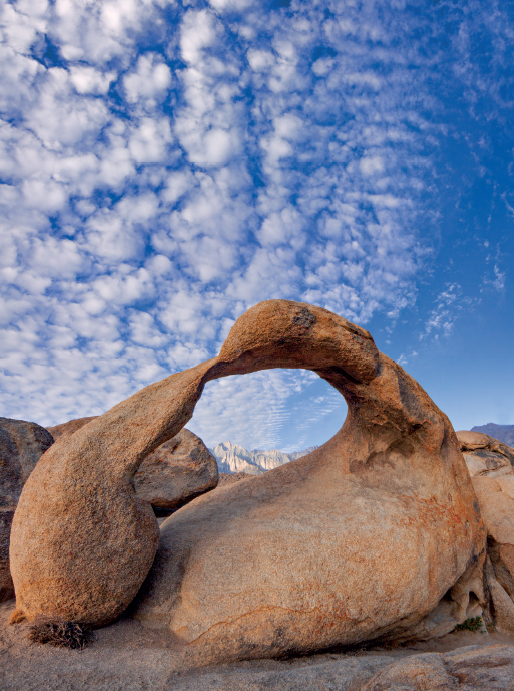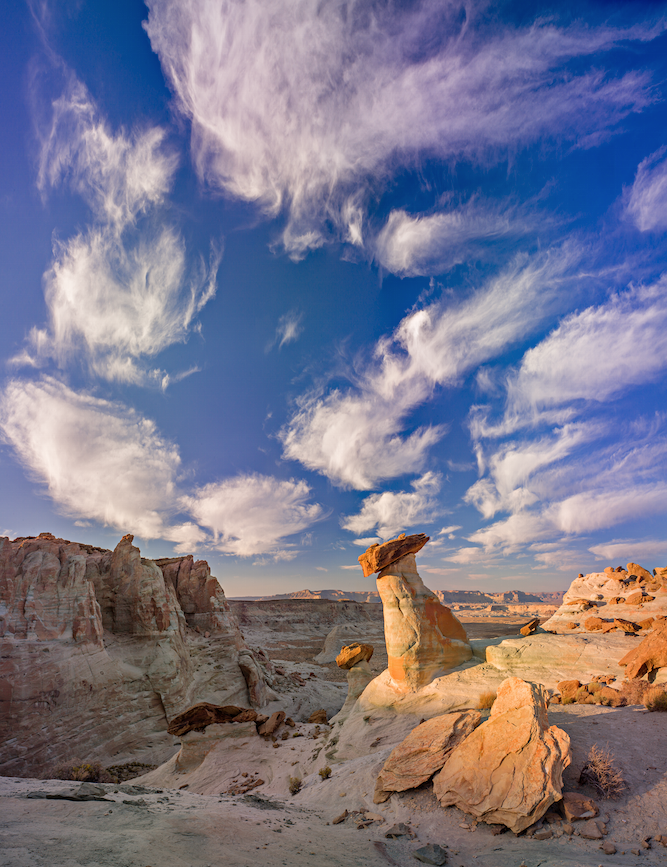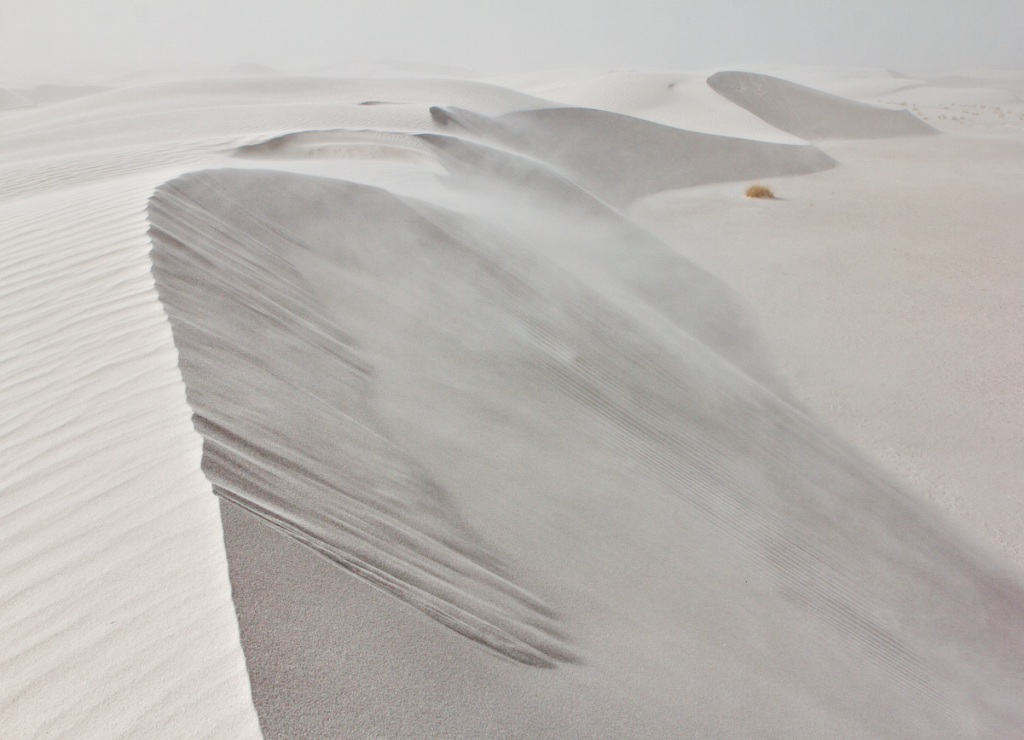
Uniqueness sells.
Customers like to buy artwork that is original, different, and unexpected.
The unique aspects of your work are some of your most important selling assets. To achieve this you will need to work hard at developing a personal style. Having a style based on your vision for your work will make you unique and give you an edge that no competitor can ever take away from you. There are many ways of developing a personal style. This can be achieved through your selection of subject matter, the type of compositions you favor, or the use of a specific color palette, for example. However, you can also develop a personal style by creating a unique matting and framing style.
Living on the Navajo Reservation inspired us to create artwork that featured a unique matting style. Instead of offering photographs matted in plain white mats, the way photographs are traditionally presented, we decided to create mats with Southwest designs and Southwest-inspired decorative elements. We bought a variety of decor items made by jewelers, craftspeople, and artisans. In fact, many of the artisans we bought items from were friends, and purchasing from them helped them as much as it helped us.

© Alain Briot
These decor items included bear fetishes, modern-made stone arrowheads, sterling horse pendants, pieces of turquoise, turkey feathers, bone carvings, beaded items, and more. These were all made by Native Americans, which provided added value and significance. We used these items to decorate our matted photographs of the Grand Canyon, Canyon de Chelly, Antelope Canyon, and other locations in Navajoland and in the Southwest.
The photographs were double-matted in beige and dark brown. We chose these colors and decorations to give the artwork a Southwestern feel. The mats were cut with intricate Southwest corner designs called palomino. At first I cut the mats by hand, but because of their complexity I could only cut one or two a day. To remedy this problem we bought an Eclipse computerized mat cutter, and this made cutting these intricate designs a breeze. The mat cutter gave us a huge advantage over our competitors, because the product was distinctive. We were also able to offer these mats at reasonable prices because cutting them was fast and efficient.

© Alain Briot
These decorated, matted photographs were each unique because no two decor items were exactly the same. Often, an artisan would create a specific item for a while, then stop and never produce it again. We made sure to explain this to our customers so they knew that each piece was unique. We also told them that if they liked a specific piece they needed to buy it now, because once it was gone we could never make the same exact one again. These decorated mat pieces sold extremely well and we never had enough of them in stock!
We also included an information label on the back of each mat. This label featured information about the photograph and the decor items displayed in the mat. These labels were simple: just text printed on white paper. Here is an example of the information label:
NAVAJO HOGAN
This hogan is located in Canyon de Chelly and was photographed during the fall when the cottonwood trees turn bright yellow. The hogan is the traditional home of the Navajo people. Hogans are made of juniper logs partially covered with earth. The earth coating provides good insulation from both heat and cold. The doorway of a hogan always faces east to receive the blessing of the day’s first light.
The decorations and their meanings:
- The feathers are symbols of prayers, sources of ideas, or marks of honor.
- The turquoise protects the wearer from harm and brings good fortune. Turquoise helps you to stay in a place of love and connectedness with others.
- The bear fetish represents physical strength, introspection, and leadership.
- The stone arrowhead is handmade. Native Americans used arrowheads for hunting and for protection.

© Alain Briot
For customers who preferred a traditional fine art presentation, we continued to offer photographs matted in plain white mats. Offering these two different presentations meant that we had something to offer to both audiences so did not lose our previous customers. Instead we expanded our audience by offering something that pleased both categories of clients.
Don’t sell on the basis of price; sell on the basis of uniqueness. If customers come to you because of price, they will leave you because of price. If customers come to you because of uniqueness, they will continue buying from you because of uniqueness.
This article is from How Photographs are Sold by Alain Briot.
